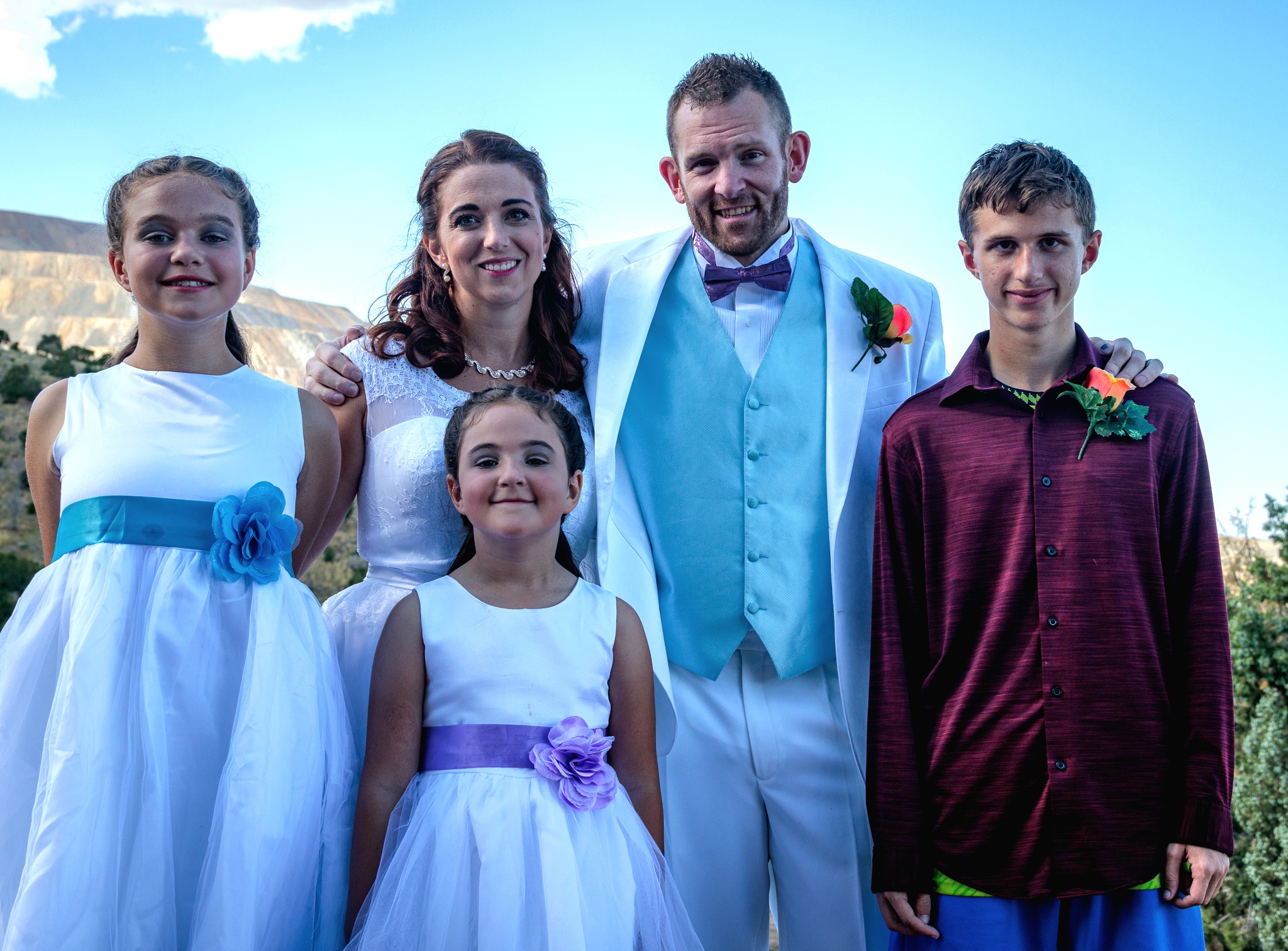
Amanda hopes her cancer journey is a positive example for her kids
April 22, 2024
This is a guest post by Amanda Reitz, a mother of three children who were 13, 9, and 5 years…
Read More
The KCA’s 2023 Virtual Patient Symposium took place on September 9th with expert speakers presenting topics ranging from kidney cancer basics and breaking new research to discussions about nutrition, psychosocial support, and the patient experience. We collected questions from the audience and compiled the answers from the speakers below. You can find all the session recordings available to watch for free on the Virtual Patient Symposium page.

Dr. Amy Luckenbaugh, Vanderbilt University Medical Center
Routine follow-up scanning for kidney cancer has historically been recommended for 5 years. Since kidney cancer can metastasize after five years, have the recommendations, have the recommendations been updated?
The recommendations for screening have not been updated. Surveillance is recommended for stage I, II, and III through 5 years post-operatively and ‘as clinically indicated’. This is because the majority of recurrences occur within the first 5 years. The phrasing ‘as clinically indicated’ does allow for some flexibility and some physicians may take into account specific patient factors (genetic predisposition, bilateral tumors, etc) and tumor factors (stage, grade, margin status) when deciding how long to survey patients.
Chromophobe renal cell carcinoma (RCC) monitoring means MRI scans of the kidney area, but does not include monitoring that might catch metastatic or potential metastatic areas. What do you recommend for people diagnosed with chromophobe RCC to look for metastatic areas when the current standard seems to be only targeting the kidney?
I would recommend surveying patients with chromophobe kidney cancer in a similar way as we do those with RCC. I recommend chest imaging (either chest X-Ray or CT scan) and abdominal imaging to monitor for recurrence. The MRI of the kidney does evaluate the entire abdomen, including the liver and lymph nodes, which are potential areas for recurrence. CT of the abdomen is another method to monitor for recurrence.
Dr. Cody Craig, Vanderbilt University Medical Center
Why do you sometimes see multiple types of kidney cancer on a path report? For example clear cell RCC and chromophobe RCC? Particularly compared to other cancers where a biopsy might just show a single type of tumor.
Overall, it is still relatively unusual for a kidney to show multiple different tumor types, but if any organ can do it, it is the kidney. Many of the different tumor subtypes have the same risks associated with them (smoking, chronic kidney disease, etc), so patients who have long-term exposures to these things are at risk of developing different tumor types, and sometimes these multiple tumor types develop in the same kidney.
It seems like the tests (CT and MRI scans, blood work, etc) prior to seeing the kidney gives a limited view of what is going on compared to hands-on pathology. How often do you see more going on compared with the initial tests?
Lab tests, imaging, and pathology all work in tandem to get the full idea of what is happening in the kidneys. Many lab tests can help tell the functional status of a kidney (i.e. how well it is working), or risk of malignancy. Imaging can locate masses, see roughly what they are made of, and can place them into categories for how likely they are to be malignant. They can sometimes diagnose a malignancy outright; however, the majority of the time, a tissue sample is needed to confirm something is cancer, to give it a classification, and many other details that just can’t be done without seeing it under the microscope.
Can you touch on “testing the margins” when they remove my kidney, and how fast is this done?
Regarding “testing the margins,” we put a colored ink on the entire outside of the specimen as soon as we receive it from the surgeon. This black ink designates the areas where the surgeon cut during the procedure. During our investigation of the tissue, we take pieces of the specimen to look at under the scope. We are able to see that black ink under the microscope, so if we see tumor touching that margin, we call that positive, with the assumption that there may be tumor still left in the body. Margin evaluation is done at the same time as everything else, and takes no longer than the rest. Once you receive a final diagnosis for your nephrectomy, the margins should be included. Just note, not all specimens have margins, so it is not always relevant to every pathology report.
Can you please explain the difference between the eosinophilic variant and classic variance of chromophobe RCC?
From a clinical perspective, there is no difference between the classic and the eosinophilic variants of chromophobe RCC.
The distinction is mostly important for us pathologists. Each of those variants share features with other tumors, so it is important that we do extra testing to differentiate them. For example, some eosinophilic variant chromophobes may look very similar to oncocytoma, which is a benign tumor. That is a huge difference, so it is very important that we recognize and tell them apart. Another reason we make sure to mention it, is so that if the tumor comes back or spreads, the pathologist who looks at the next biopsy will know exactly what the original tumor looked like, so it helps make our lives easier.

Dr. Daniel George, Duke Cancer Institute
For someone with full left nephrectomy and growth in right kidney, have any of these drug combinations shown good results or is the risk greater when one only has one kidney?
These are difficult situations to comment on without more details so please interpret these comments as general and not specific to your case. We do not typically use these regimens for early stage (stage I and II) disease. If your kidney function is good and the location of the tumor is favorable then a localized treatment is preferred. If this is not the case then we are in a situation without much data. There is only anecdotal evidence that these agents will downstage your tumor enough to change the surgery from total nephrectomy to partial nephrectomy, however, you can discuss this with your medical team.
Do you think we will see more studies on the quick cycling of triplet therapy (target therapy followed by immunotherapy, etc.) for clear cell RCC?
We have seen some approaches like this in the past with mTOR and TKI agents without much difference in tumor response but more side effects. I worry we will be giving more toxic therapy (triplet) to many patients who might not need it. I personally prefer a more adaptive design (meaning we change or adapt therapy based on an individual patient’s response) rather than a prescriptive approach (meaning we determine what the cycles and changes will be regardless of the response). The PDIGREE study is an example of an adaptive design where the really good responders stay on nivolumab alone, while the non-responders change to cabozantinib and the stable to partial responders are randomized to nivolumab vs nivolumab and cabozantinib.
Regarding the Keynote B61 trial*, what conclusions can be drawn with regards to translocation RCC? Only six such patients participated.
Just that doing studies in rare subtypes is hard but possible. We need to stick with these approaches and encourage patients with rare subtypes to seek treatment at research centers. I am hopeful that through continued research will find precision approaches to this tumor subtype.
*The phase II Keynote B61 trial showed that first-line treatment with pembrolizumab plus lenvatinib – an immune checkpoint inhibitor combination – produced durable responses in patients with advanced non–clear cell renal cell carcinoma. Read more.
Why did the study comparing cabozantinib vs cabozantinib in combination with an immunotherapy (PAPMET2) not use an immunotherapy that is approved by the FDA specifically for kidney cancer?
I can’t speak for the companies that make the immunotherapies approved for kidney cancer (Merck and BMS) but I can say that their FDA label are very broad and cover this space so there may not have been as much of an incentive. In addition, they have ongoing phase I and II studies with their approved agents and new combinations so their interests may not have been to combine with cabozantinib but instead some newer agents in development.
Are there any updates on CAR T cell trials?
There is definite interest in this modality in kidney cancer. I know of at least one active study targeting CD70 but I suspect there are others. Safety is always a concern but I do believe this will be an option for late stage pretreated patients in the future.

Is high blood pressure a greater risk on Cabo if already have treated hypertension?
In my experience, people with treated hypertension are at a higher risk for high blood pressure from cabo. That being said, it is still important for people with a normal blood pressure at baseline to closely monitor BP because it is not unusual for them to experience cabo-induced hypertension. Regardless of whether patients have treated hypertension at baseline, they may require a new blood pressure medication and/or a higher dose of blood pressure medication to control this side effect. – Dr. Julia Stevens, Beth Israel Deaconess Medical Center
What are effective second-line radiation options to treat metastatic clear cell RCC in the bones if disease progression after Opdivo (nivolumab) treatment?
Radiation is effective no matter what line of systemic therapy a patient is on. In patients with painful sites of disease, radiation can be used to reduce pain. In patients with limited sites (usually fewer than 5 sites) of disease, radiation can be used to control the disease by treating all the sites. In patients where the disease is stable or regressing except for a few sites (one to three), radiation can be used to control the growing sites and give the patient more time on that current line of systemic therapy. – Dr. Chad Tang, MD Anderson Cancer Center